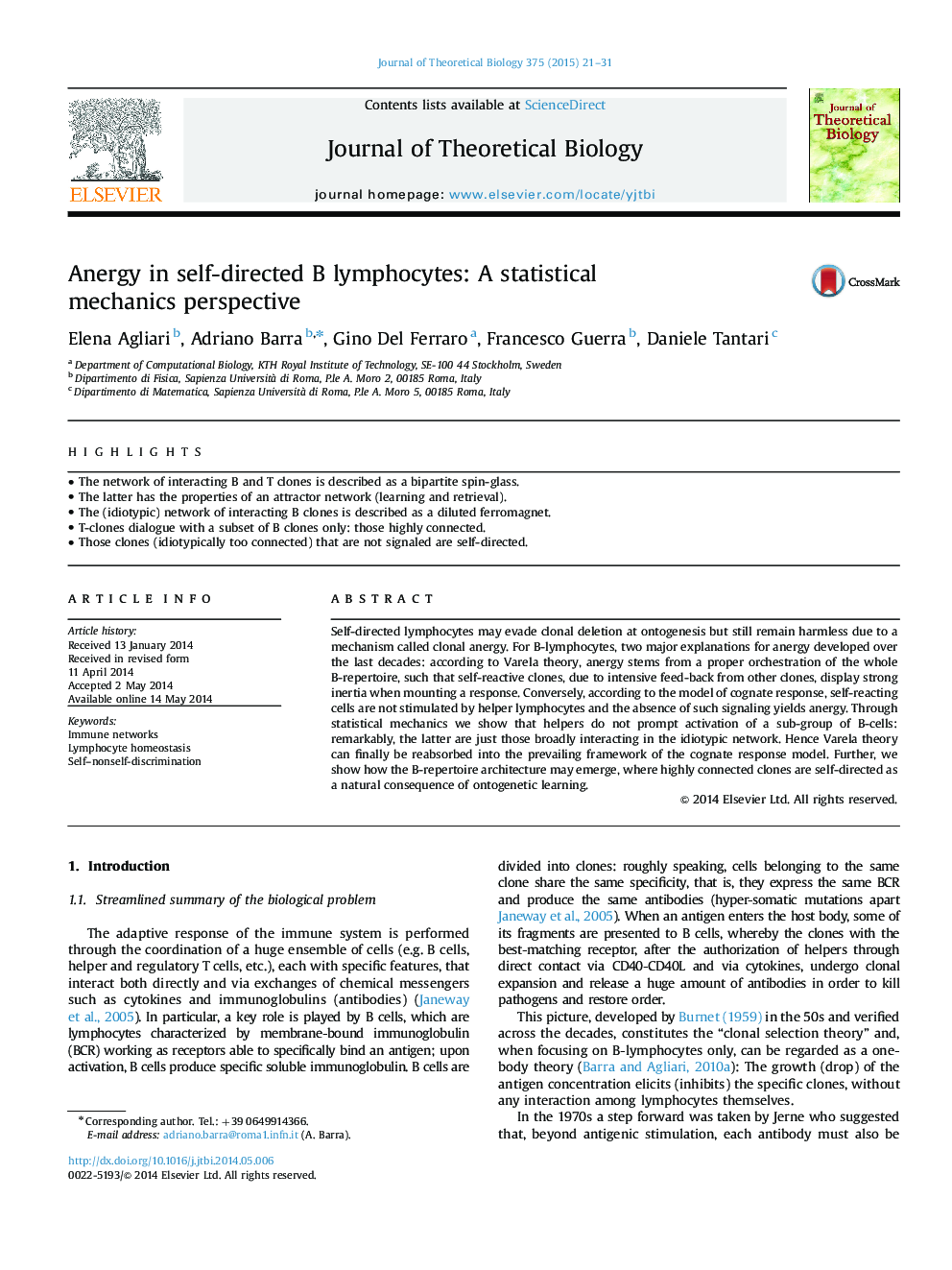| Article ID | Journal | Published Year | Pages | File Type |
|---|---|---|---|---|
| 6369751 | Journal of Theoretical Biology | 2015 | 11 Pages |
â¢The network of interacting B and T clones is described as a bipartite spin-glass.â¢The latter has the properties of an attractor network (learning and retrieval).â¢The (idiotypic) network of interacting B clones is described as a diluted ferromagnet.â¢T-clones dialogue with a subset of B clones only: those highly connected.â¢Those clones (idiotypically too connected) that are not signaled are self-directed.
Self-directed lymphocytes may evade clonal deletion at ontogenesis but still remain harmless due to a mechanism called clonal anergy. For B-lymphocytes, two major explanations for anergy developed over the last decades: according to Varela theory, anergy stems from a proper orchestration of the whole B-repertoire, such that self-reactive clones, due to intensive feed-back from other clones, display strong inertia when mounting a response. Conversely, according to the model of cognate response, self-reacting cells are not stimulated by helper lymphocytes and the absence of such signaling yields anergy. Through statistical mechanics we show that helpers do not prompt activation of a sub-group of B-cells: remarkably, the latter are just those broadly interacting in the idiotypic network. Hence Varela theory can finally be reabsorbed into the prevailing framework of the cognate response model. Further, we show how the B-repertoire architecture may emerge, where highly connected clones are self-directed as a natural consequence of ontogenetic learning.
